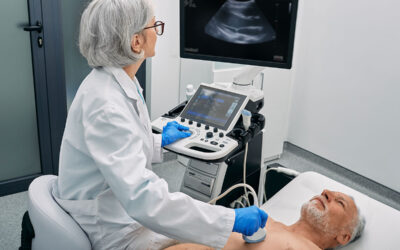In 2007, the American Registry for Diagnostic Medical Sonography (ARDMS) introduced the Registered Physician in Vascular Interpretation (RPVI) credential, responding to the requests of physicians in vascular surgery and vascular medicine. This marked a significant advancement, ensuring that physicians interpreting complex studies have proven their expertise. It was a step towards enhancing patient care by mandating a high level of competency.
As of 2014, the American Board of Surgery requires all physicians seeking board certification in Vascular Surgery to obtain the RPVI credential. This mandate underscores the importance of formal training and comprehensive vascular lab experience, crucial for improving patient outcomes. Physicians benefit greatly from structured programs that offer extensive exposure to diverse vascular tests.
Current RPVI Credentialing Requirements
The ARDMS offers several pathways to qualify for the RPVI, ensuring that all candidates meet rigorous standards:
- Registered Vascular Technologist (RVT) Credential Holders (Prerequisite A1): Physicians with the RVT credential, originally obtained to demonstrate proficiency, are a logical fit for the RPVI pathway.
- Accredited Vascular Lab Staff (Prerequisite A2): Physicians working in accredited vascular labs can leverage their hands-on experience.
- Formal Training (Prerequisite B1 and C1): Physicians with formal training programs meet stringent educational requirements.
- Informal Training (Prerequisite B2 and C2): Physicians with informal training need to complete 500 clinical studies in a clinical diagnostic setting, ensuring real-world experience.
The ARDMS has clarified the requirements for the informal training pathway, emphasizing the necessity of completing clinical studies in a hands-on, clinical setting. The following statement was issued:
“All 500 required clinical studies, noted in the PVI examination application prerequisites B2 and C2, must be completed through employment as an interpreting physician in a clinical diagnostic setting (limited to hospitals, clinics, and private practices). This can include vascular studies billed by the applicant for contracted interpretation. Interpretation of cases outside of a clinical setting, such as online or in-person courses/seminars, do not meet the experience requirement.”
Leadership and Intent
Under the current leadership, the ARDMS remains committed to maintaining high standards in vascular interpretation. The leadership’s focus is on ensuring that physicians gain substantial, practical experience in clinical settings where patient management decisions are made. This hands-on approach ensures that RPVI candidates can accurately interpret both normal and abnormal evaluations, directly impacting patient care.
Addressing Historical Practices and Future Challenges
Historically, some physicians have relied on the preliminary impressions of technologists without directly reviewing images or waveforms. The RPVI credentialing process aims to change this by requiring physicians to recognize and understand pathology through direct interpretation. This ensures that they can make informed clinical decisions.
However, there are challenges for physicians outside formal vascular training programs, such as those in Cardiovascular Fellowship programs or those practicing for years without extensive vascular interpretation experience. These physicians need opportunities to gain experience and validate their knowledge through credentialing exams. The discussion around cardiovascular interventionalists and their inclusion in vascular testing fellowships is ongoing and crucial for comprehensive patient care.
NAVIX’s Role in Supporting Physicians
NAVIX recognizes these challenges and offers a Preceptorship in Vascular Interpretation, providing complete patient studies, including history, images, and interpretations. This program offers a diverse range of cases, mirroring the ARDMS’s intent by presenting real clinical scenarios and fostering a deep understanding of vascular diagnostics.
Balancing Standards with Practical Experience
The ARDMS’s goal is to maintain high standards while being inclusive of all specialties. It’s essential to balance these standards with practical ways for physicians to gain necessary experience. Considering alternative methods, such as structured courses and accelerated programs, could provide valuable pathways for meeting these rigorous standards.
In conclusion, the ARDMS should explore and evaluate alternative experiential learning methods to ensure they align with their standards for education and clinical experience. By doing so, they can support physicians dedicated to advancing patient care through excellence in vascular interpretation.


